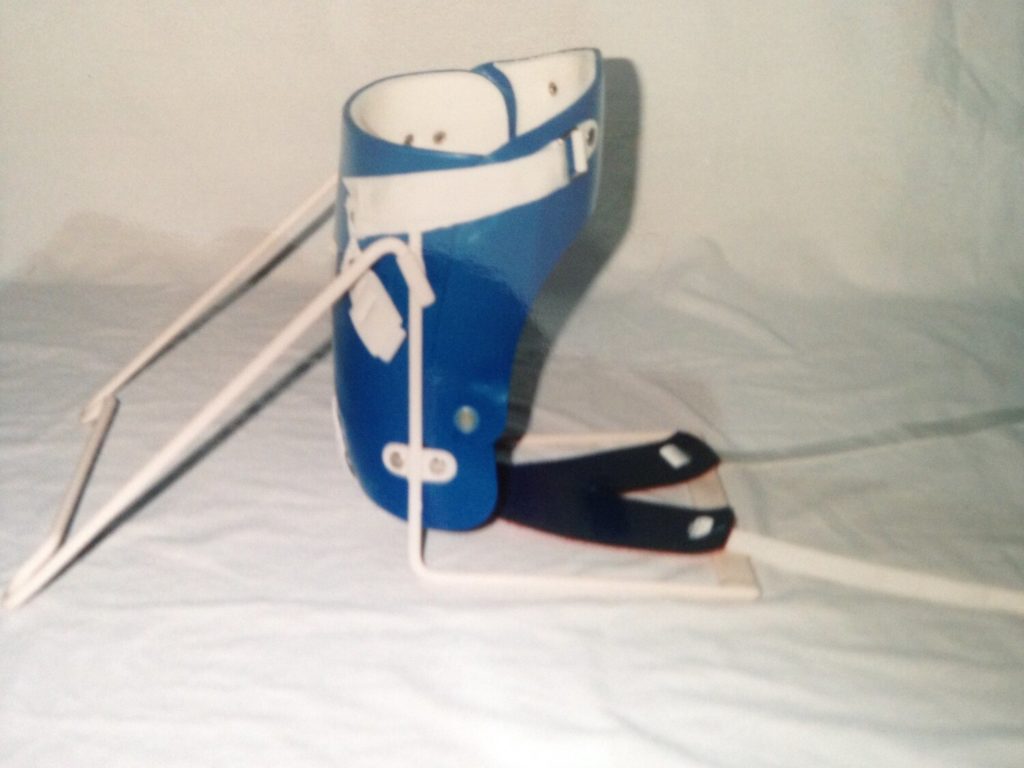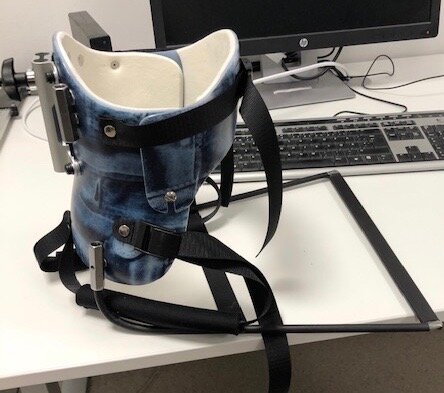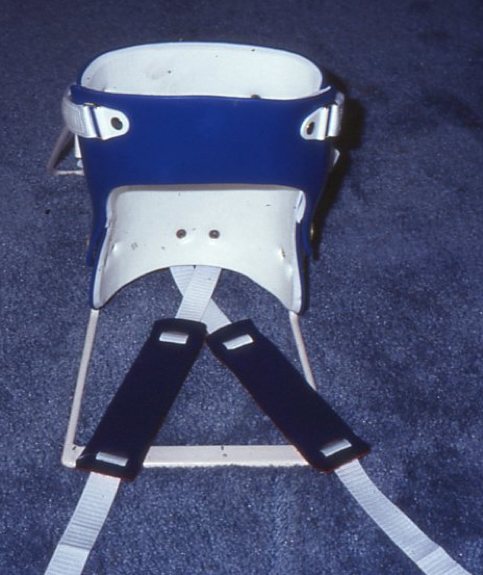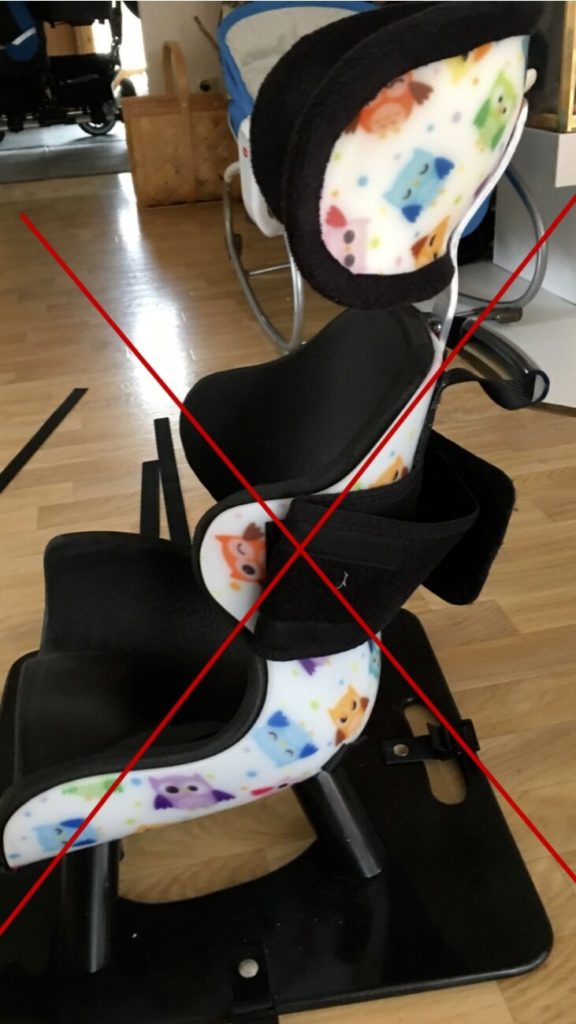The Sitting shell provides the conditions for learning head control and sitting balance. Many children have learned to sit through the use of the sitting shell. Children who previously sat leaning forward with their hands propped on the floor could suddenly lift their hands off the ground without falling. Other children who had sat leaning backward in spastic movement patterns found calmness and control in the sitting shell. The child gained an understanding of the goal of balance – to sit upright. To learn balance while sitting, the child needs to release hand support and adopt a stable ‘pillar,’ which the sitting aid helps the child with. If the child is leaning backward, it’s not possible to teach balance. Therefore, it’s important to have expectations and create opportunities for the child to practice sitting balance in an upright position where the center of gravity falls perfectly along the vertical axis. When the child receives assistance with the stable aspect of sitting and simultaneously moves their arms and head, balance is trained and strengthened. For those who initially have neck and/or chin support, gradually easing off the supports allowed the child to eventually learn to sit independently. In a link below, you will find background, purpose, information about research, and also manufacturing instructions.
Conceptual Confusion
When the sitting shell was first created, there were no other products with the same name. Today, products that are reclined and passive, referred to as seating aids, are manufactured. This emphasizes the importance of precision when specifying the product to be produced at an orthopedic workshop.
Practical
The seating aid is functional – the child can sit on the floor, in the bathtub, on the grass, or in a sled. If you remove the rear support, the child can sit on a chair (with the assurance that someone is sitting beside, of course). The child sits on their own bottom, and the seating aid is easy to carry along. The picture below shows one of the first seating aids, further down you can see a relatively newly made seating aid with a distinct built-in arch in the lower back, providing a clear improvement in posture.



If you are interested in seating aids, you can contact your nearest orthopedic workshop. If you, as an orthopedic engineer, caregiver, or parent, want more information about seating aids, the purpose of seating aids, and also instructions on how they are made, you can click here to access manufacturiing instructions. If you want to read a study on children’s balance with and without seating aids, you canfind it here.
Below is a picture of what is sometimes confused with the sitting shell. “There is a BIG difference between a Sitting shell and the image below.” In the picture below, the child’s center of gravity is behind the hip joints, and the child sits reclined and PASSIVE in a resting position. The child is not sitting on their own bottom, and the seat is heavy and difficult to use in various ways. “When you and I sit upright, we engage the postural muscles in the back and neck They don’t tire out, allowing us to sit for extended periods. The child is not allowed to do this in this type of seat. Here, the child needs to perform a ‘sit-up’ if they want to achieve an upright position. It is important to believe in the child and provide the opportunity for the child to learn to sit with the center of gravity in a perfect position – not too far back.
